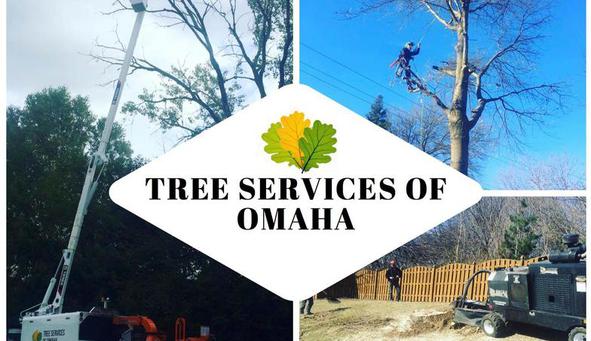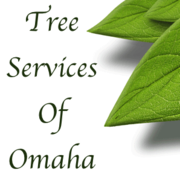Tree Services of Omaha - Omaha, Nebraska
Chlorosis
by David Steg on 10/10/14
Chlorosis
Chlorosis is a yellowing of normally green leaves due to a lack of chlorophyll. Many factors, singly or in combination, contribute to chlorosis. In northern Illinois, some of the most common causes among trees and shrubs include nutrient deficiencies related to soil alkalinity (high pH), drought, poor drainage, and compaction of the soil. Common tree species exhibiting chlorosis are pin oak, red maple, white oak, river birch, tulip tree, sweet gum, bald cypress, magnolia, and white pine.
SYMPTOMS OF CHLOROSIS
Chlorotic plants may only show symptoms on one or two branches, or the whole plant may be affected. The first indication of chlorosis is a paling of the green color of the foliage, followed later in the season by a general yellowing. In mild cases, the leaf tissue is pale green, but leaf veins remain green. In moderate cases, the tissue between leaf veins is bright yellow. In advanced cases, leaf size is stunted and the leaf tissue is pale white to pale yellow. The leaf margins may become scorched or develop brown, angular spots between the veins, and the leaves may wither and drop prematurely. In conifers, an overall yellowing of the needles occurs. If severe, the needles progressively turn brown and drop, and twigs and branches may die back.
CAUSES OF CHLOROSIS
Availability of plant nutrients from the soil varies with soil pH. Most urban soils in northern Illinois are alkaline, especially the disturbed soils of neighborhoods developed since the late 1940s. The soil’s pH is an indicator of soil acidity or alkalinity (on a scale of 1-14, 7.0 is neutral, below 7.0 the pH is acidic, above 7.0 the pH is alkaline). If you do not know the pH of your soil, consider having a soil test done.
A common cause of chlorosis is a deficiency of iron or manganese, both of which are present but unavailable in high pH soils (pH>7.2). Iron and manganese are needed by plants to form chlorophyll and to complete photosynthesis. With most plants, the micronutrients iron, manganese, copper, and zinc are most available when the pH is between 5.0 and 6.5; a soil pH range between 6.0 and 6.5 is considered optimal for nutrient availability. Excesses of potassium, magnesium, and phosphorous also contribute to chlorosis. When present in excess, these elements cause some trees, particularly oaks and maples, to take up inadequate amounts of the micronutrients iron and manganese. If iron or manganese deficiency is suspected, there are both long-term and short-term treatment strategies, but a soil test will determine the pH as well as the availability of nutrients that cause chlorosis. Stressors, such as temperature extremes, drought, poor drainage (which limits soil aeration) or restricted root growth, further limit nutrient uptake in plants sensitive to chlorosis.
MANAGEMENT
Prevention is the best control. Do not plant chlorosis-susceptible trees in soils having a high pH or in soils low in organic matter. If practical, replace species that are susceptible. When the leaves of plants become chlorotic, always determine the primary cause through a soil test. Then, take the necessary steps to prevent further damage.
Short-Term solutions
Soil treatments, spraying applications of micronutrients to foliage, and trunk injections merely treat the symptoms and not the basic causes of chlorosis.
Soil fertilization treatments produce the best results, but are usually the slowest to respond. Soil treatment is best done in early spring through mid-May. For mildly chlorotic trees, fertilize with a nitrogen or nitrogen- and sulfur-based fertilizer. This will provide some acidity for the treatments below.
• Incorporate chelated iron (found in garden centers under various names) into the top two inches of soil. A root feeder may be used, but follow label instructions for rates. Water in well.
• Apply manganese sulfate or iron (ferrous) sulfate at a rate of 0.25 pound per 100 sq.ft., watering in well.
Foliar spray usually has a faster green-up response time, but is only a temporary solution, lasting 60 to 90 days. Spray treatments will only correct leaves that are treated but will not benefit leaves that are produced later in the season. Thoroughly spray the foliage in late spring or early summer when leaves are expanding in size. Repeat applications are usually needed. Large trees may require a professional arborist or landscape service for adequate coverage. Use one of the following:
• Iron chelate, following label directions and rate.
• Iron sulfate should be used at a rate of 0.50 pound of iron sulfate per 100 sq.ft. (follow label directions for soluable solution rate). Iron sulfate may cause rust stains to sidewalks, buildings, or spray equipment and should be washed off immediately.
Trunk injection is another method of applying iron or manganese-containing compounds to chlorotic trees. Recovery is often quick and treatments are effective for two or three years. Trunk injections should be made by a commercial arborist for safest and best results.
Long-Term solutions
The most lasting results are obtained by improving the tree’s rooting environment.
• Remove existing grass from under the tree.
• Apply a one-to-two inch layer of organic compost (acidic leaf mold), followed by three-to-four inches of organic mulch (composted woodchips). This will reduce weed competition, prevent soil temperature fluctuations during the winter and summer, and help to create more favorable soil conditions for roots to grow.
• Water during dry periods to minimize stress.
• Avoid fertilizing chlorotic plants with potassium and phosphorous unless a soil test indicates a deficiency, and avoid nitratecontaining fertilizers, limestone, and limecontaining materials.
In early spring, apply 3 pounds per 100 sq.ft. of granular sulfur to the soil beneath the crown of the tree out to the drip line (distance to end of branches). If possible, apply 1.5 pounds per 100 sq.ft. beyond the drip line. Water thoroughly after chemicals have been applied since sulfur can cause chemical burn to turf grass, especially in dry soil.
Or, in the fall, apply 3 pounds per 100 sq.ft. of granular sulfur beneath the crown of the tree out to the drip line. This treatment may also be broken into two 1.5 pounds per 100 sq.ft. treatments, one applied in the late fall and the other in the early spring. Sulfur should be watered in at the time of application or applied immediately before rain is expected.



